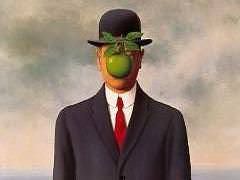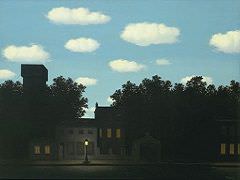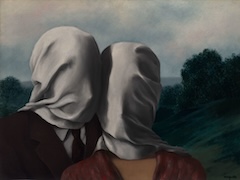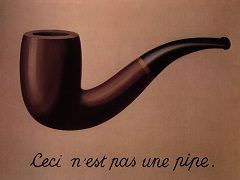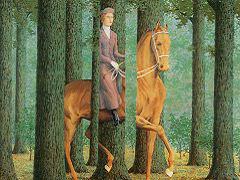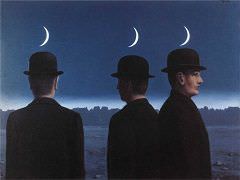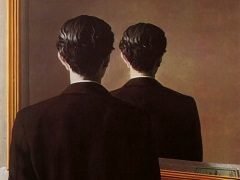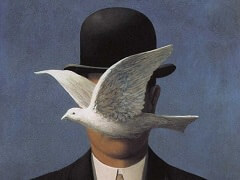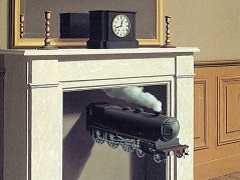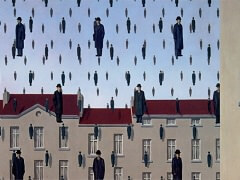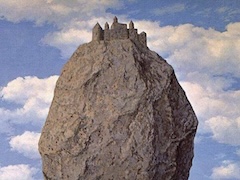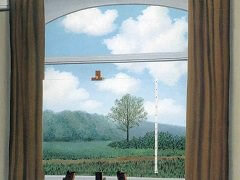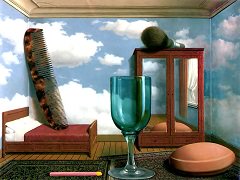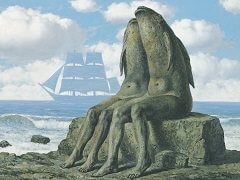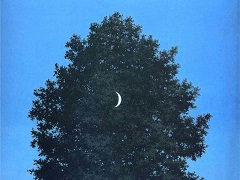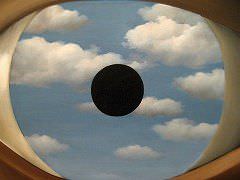Painted Plaster Mask, 1935 by Rene Magritte
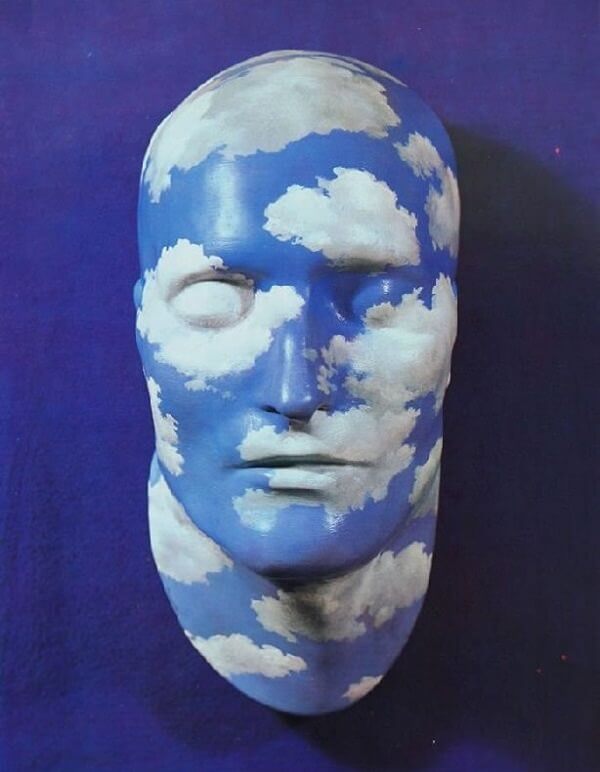
An important part of Magritte's imagination is the way in which he employed two or more manifestations of reality in the same "image." He slid one over the other, bringing them together within the same confines, and made two seasons, two times of day (such as day and night), two areas (indoors and out-doors, room and sky) coincide.
Here Magritte has painted over the image of Napoleon's familiar death mask to create the impression of a blue sky with clouds. Thus the mask has acquired a living quality which makes it stranger than when it was merely dull plaster. Moreover, Magritte has added space to conjure up a sense of vastness, reducing the tangibility of the sculpture but reinforcing the poetic dimension. It is a genuine transformation, based on the juxtaposition of the real death mask with a recollection of a sky with clouds - which is no longer a recollection, since, together with the mask, it forms a new poetic and spatial reality.

